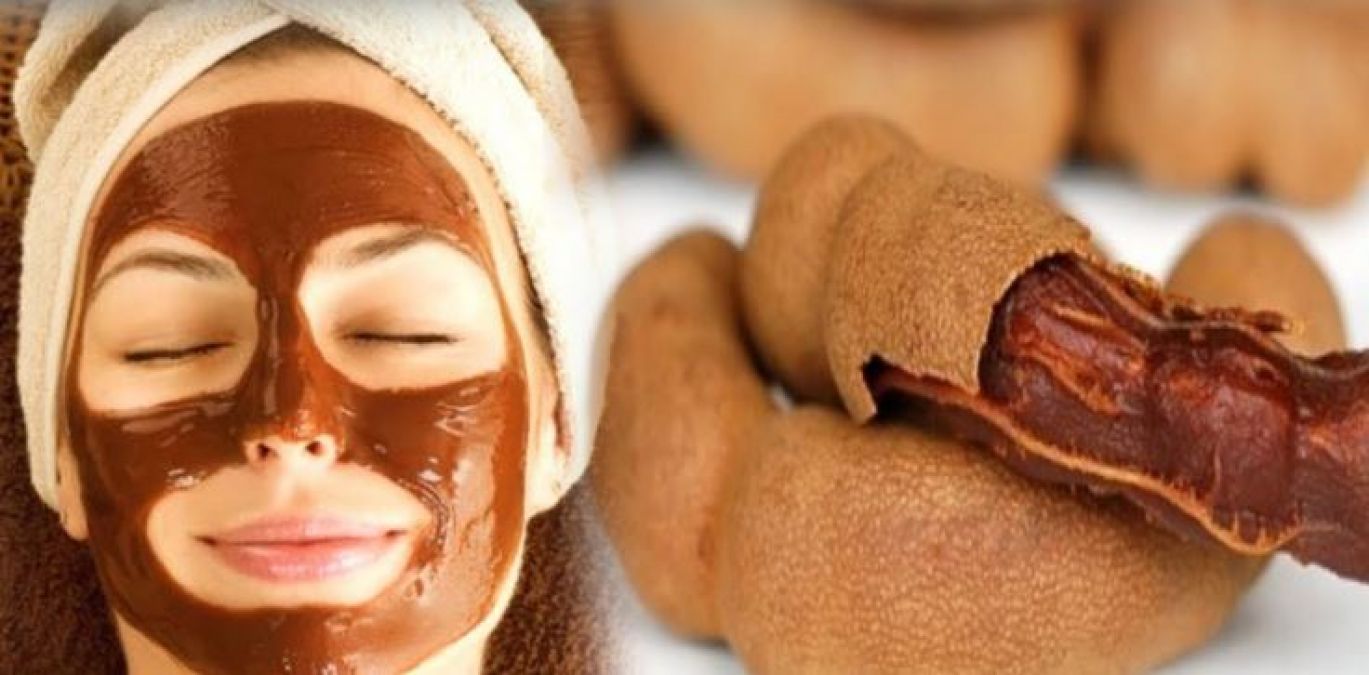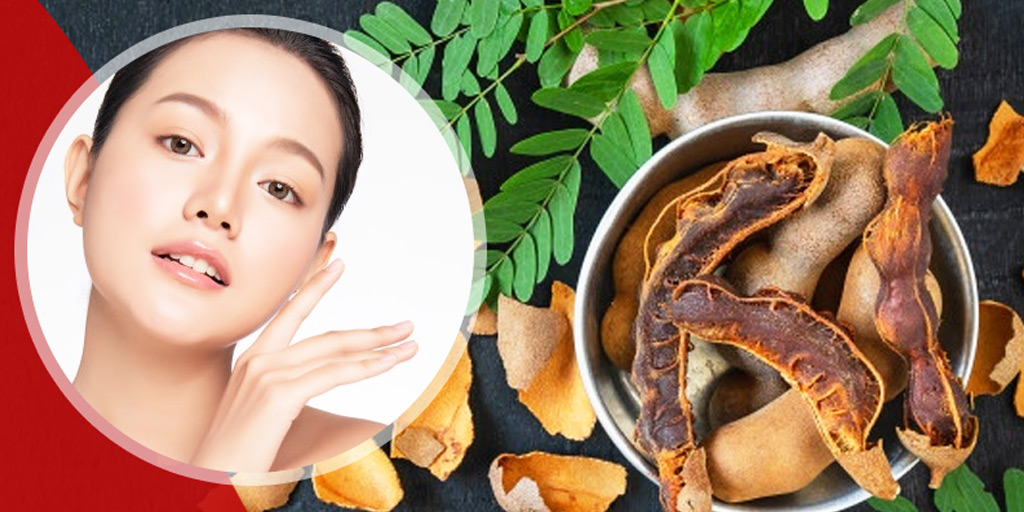Benefits Of Tamarind For Skin. The mere mention of tamarind conjures up pleasant memories of home-cooked meal options laced with this tangy, intense flavor! The most common way to prepare tamarind is to extract the juice from the pulpy seeds! Even so, are you aware of the benefits of tamarind juice that go beyond its flavor?
Tamarind juice, which is commonly used in the Caribbean, Latin American, and Asian cuisines, is high in vitamin C, vitamin B, carotenes, potassium, and magnesium, among other important nutrients! It’s no surprise that they actually bolster your immunity as well as benefit your health in a variety of ways! Here, continue reading to learn more!
Contents
The tamarind tree

The tamarind (Tamarindus indica) plant is native to Africa, but it has a devoted following in South Southeast Asia and South America. The curved pods have brown flesh that adds sour as well as tangy notes to a variety of dishes.
One of the most famous Filipino dishes which uses tamarind as the primary souring agent is pork in tamarind soup. It is also popular to see sweet tamarinds wrapped in cellophane and drenched in salt or sugar.
Tamarind parts such as flowers, leaves, seeds, and fruits have been used medicinally since ancient times.The fruit has been utilized for skin and hair care in Southeast Asia for generations.
To better understand the skin benefits of tamarind extract, consider the plant’s composition and how it relates to other known skin health substances.
Read more about How To Get Even Skin Tone For Black Skin.
What are the Benefits Of Tamarind For Skin?
The Benefits Of Tamarind For Skin health, like that of most substances found in nature used in skincare, are determined by the various chemicals that comprise it. In this section, we will look at the three major chemical groups found in tamarind, as well as the mechanisms by which each one helps to keep healthy skin.
Xyloglucans
Tamarind seeds are high in the polysaccharide xyloglucans (the scientific term for a long sequence of sugar molecules). Xyloglucans aid in the retention of skin moisture and the improvement of skin elasticity. This is one of the Benefits Of Tamarind For Skin.
Moisture retention happens in the skin’s stratum corneum layer and is essential for a smoother appearance. Meanwhile, elastic skin assists in preventing sagging wrinkles because it returns to its initial state after stretching.
Tamarind extract for skin is gaining popularity in the skincare industry due to its xyloglucan content. It has shown more impressive outcomes than hyaluronic acid in terms of retaining skin moisture as well as preventing wrinkles.
Hyaluronic acid has long become the go-to ingredient for facial skin. It is naturally found in the body, but levels decrease as we age. It is in charge of youthful skin that is free of sagging, wrinkles, as well as dryness, all of which are common among the elderly.
Xyloglucan addresses this decrease in hyaluronic acid to keep skin tight and glowing.
Antioxidants
In one study, antioxidants were used to determine the skin benefits of tamarind extract. While our bodies have mechanisms to combat oxidative stress caused by free radicals, antioxidants aid in enhancing this capability as well as neutralizing these extremely unstable chemicals. Tamarind is one of many foods that are high in antioxidants.
Tamarind seeds contain a high concentration of antioxidants, particularly oligomeric proanthocyanidins (OPC). OPCs not only have antioxidant properties, but they also have anti-inflammatory but also antihistaminic properties. They also aid in the stabilization as well as synthesis of collagen, a protein that is essential for skin elasticity.
In the same study, the antioxidant capacity of tamarind seed extract has been compared to that of vitamin C, another well-known antioxidant.
Tamarind seed extracts showed higher antioxidant activity in all treatments, owing to OPCs as well as several complex compounds.
We are all aware that prolonged exposure to sunlight produces our skin to darken. How? The mechanism of melanin synthesis was thoroughly discussed in this study. Melanin is the compound responsible for skin color development, and its production is known as melanogenesis.
The biochemical process begins with the amino acid tyrosine going through a series of changes thanks to the enzyme tyrosinase. In animal subjects, proanthocyanidins were found to inhibit this enzyme, demonstrating their potential for skin whitening. UV-induced reactive oxygen species also make a contribution to melanogenesis, as well as the antioxidants found in tamarind seeds counteracts these free radicals.
Alpha hydroxy acids (AHAs) (AHA)

Alpha hydroxy acids can be obtained naturally or synthetically. The issue with chemically synthesized AHA is that some of them cause skin irritation despite being prevalent in cosmetic products like lotions, soap, ointments, and creams.
Tamarind AHAs such as malic acid, lactic acid, tartaric acid, and citric acid are not only dermatologically safe, but they also stimulate collagen production, offering the skin a wrinkle-free but also youthful appearance. AHAs, like Xyoglucans, have water holding properties that keep our skin plump but also fresh.
These substances as well lighten the skin and remove blemishes caused by excessive sun exposure. These acids’ ability to soften the cells also allows for new skin cells to emerge, stripping away old and dead cells in a process known as skin rejuvenation. This procedure is essential for smooth, youthful, but also soft skin.
Click to see more about Health Benefit Of Onions And Garlic.
Additional nutrients
Tamarinds contain a variety of beneficial nutrients in addition to the three major chemical groups mentioned above. So that is why the Benefits Of Tamarind For Skin are really significant. Thiamin, iron, calcium, phosphorus, magnesium, niacin, and copper are among them. It also has antioxidant vitamin C and healing phytochemicals like cinnamic acid, safrole, limonene, geraniol, pyrazine, methyl salicylate, and alkylthiazoles.
Tamarinds are also high in vitamin K and vitamin A, both of which have been shown to help with acne healing. Vitamin K was also found to be effective in reducing dark circles around the eyes. Essential fatty acids are another important factor in preventing breakouts. This was thoroughly discussed in the same study that looked into melanogenesis.
According to the study, sebaceous glands to produce fatty acids which compete with essential oils like linoleic acid. Scaling occurs as a result, and the spaces between the follicles as well as surrounding tissues serve as a breeding site for the impurities that cause acne. Tamarinds address this issue by containing linoleic and oleic acid, which inhibit sebum production.
The bottom line
Tamarind is regarded as one of the most dependable natural origins of skincare products. There are many Benefits Of Tamarind For Skin. Another advantage is that it reduces food waste because the most used part is indeed the seeds, which would otherwise end up in the garbage. This is also good news for environmentalists because generating chemical beauty products in production facilities has a significant carbon footprint.
Overall, everyone benefits from this plant!
See more information about the Benefits Of Olive Juice.
.

